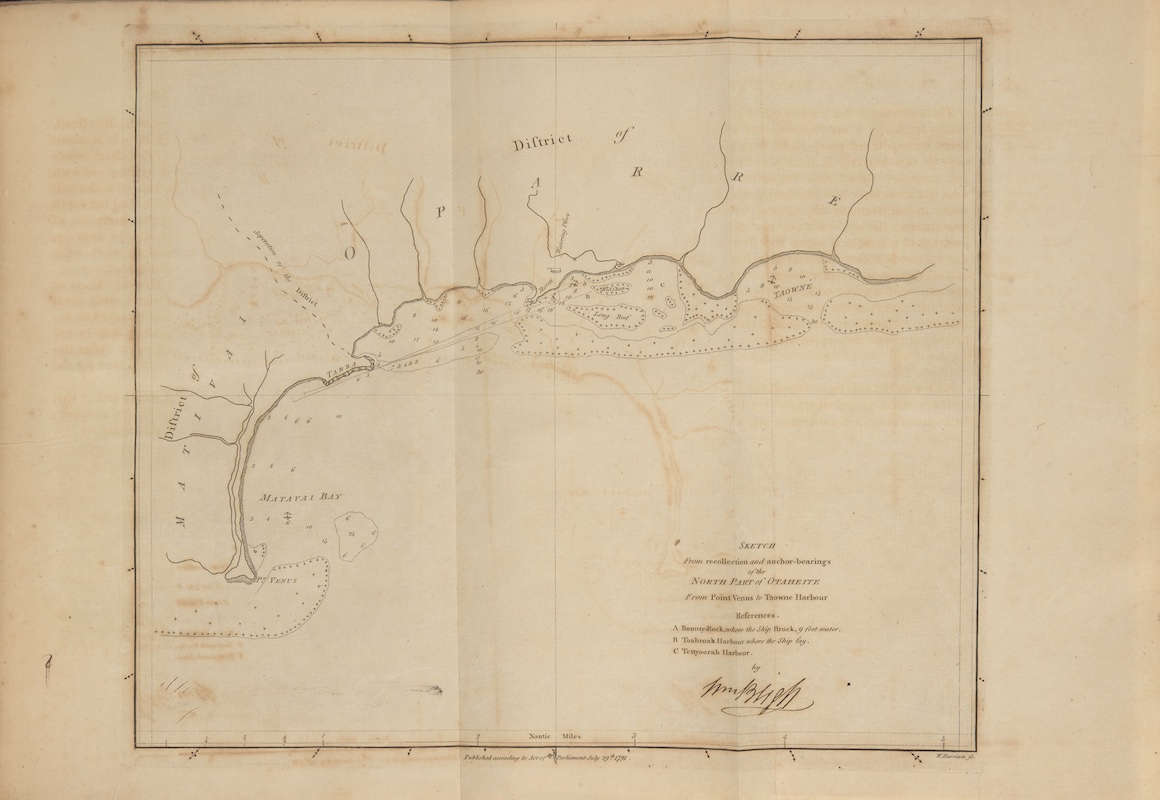Mutiny on the Bounty
BLIGH, WILLIAM. Voyage to the South Sea Undertaken by Command of His Majesty, for the Purpose of Conveying the Bread-Fruit Tree to the West Indies, in His Majesty’s Ship The Bounty … including an Account of the Mutiny …
London: George Nicol, 1792
Quarto. Engraved frontispiece portrait of Bligh, seven engraved plates including charts and plans of the Bounty and its launch (five folding). Contemporary half calf, marbled boards, rebacked preserving worn spine. Some wear and rubbing. Frontispiece foxed, some offsetting. Very good.
First edition of the official account of the Bounty expedition. The story of the mutiny and Bligh’s subsequent voyage is one of the great tales in maritime history.
Wiliam Bligh and the crew of H.M.S. Bounty were tasked with bringing bread-fruit from the South Pacific to be a new crop in the West Indies. The crew, led by his second in command Fletcher Christian, mutinied against the irascible and overbearing Bligh. Having made an extended stay on Tahiti, the men were undoubtedly attracted to the idyllic life promised by the South Pacific islands. Bligh observed that there “they need not labour, and where the allurements of dissipation are beyond any thing that can be conceived.”
Bligh and eighteen of his crew were crowded into the ship’s 23 ft. open boat and set adrift with very limited supplies and no chart. There were fewer than than six inches of freeboard – the distance between the top of the boat’s gunwales and the surface of the sea. Relying on his experience on Cook’s voyages, Bligh conceived of and executed a plan to bring his men to safety. Only one man would be lost, the victim of an attack by natives. Against all odds they made a 4000-mile voyage to Timor and then secured a ship to sail home to England. It was one of the great feats in the history of navigation.
This official account was based upon Bligh’s journal but was written, edited, and seen through the press by James Burney, under the supervision of Sir Joseph Banks. Bligh had already left England to make a second breadfruit voyage.
An appealing copy of a landmark in the literature of the sea.
Provenance: bookplates of John Waldie (1781-1862) and Francis Stanton Blake (1872-1944).
Hill Pacific Voyages 135.
$16,000






